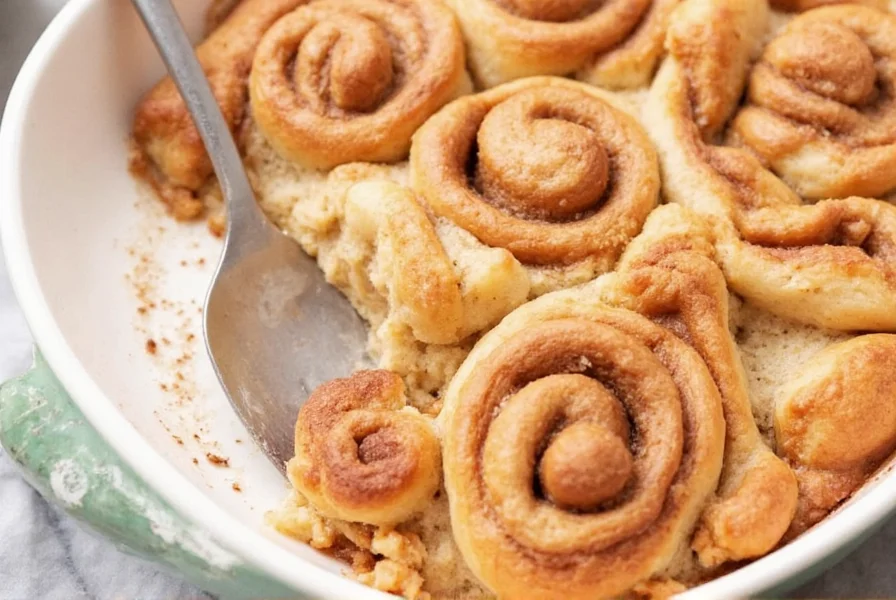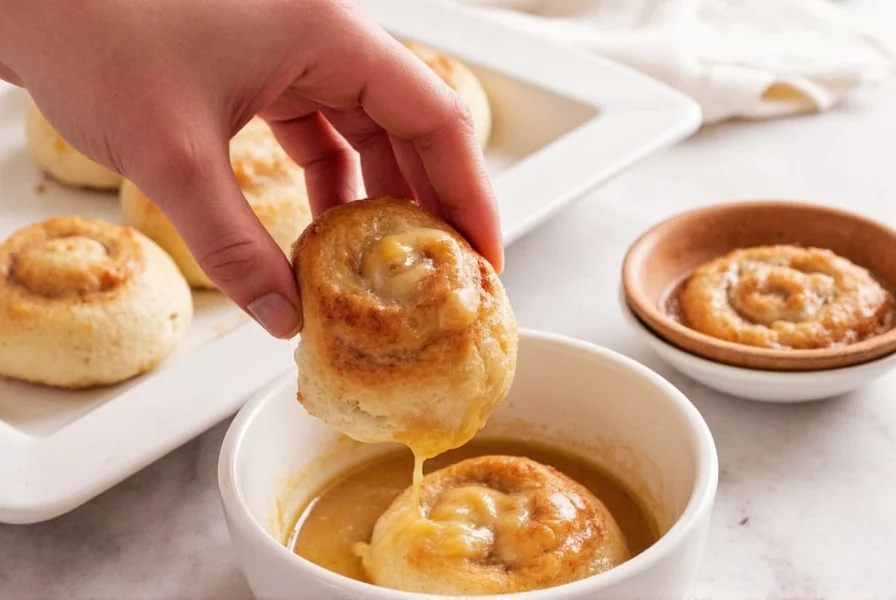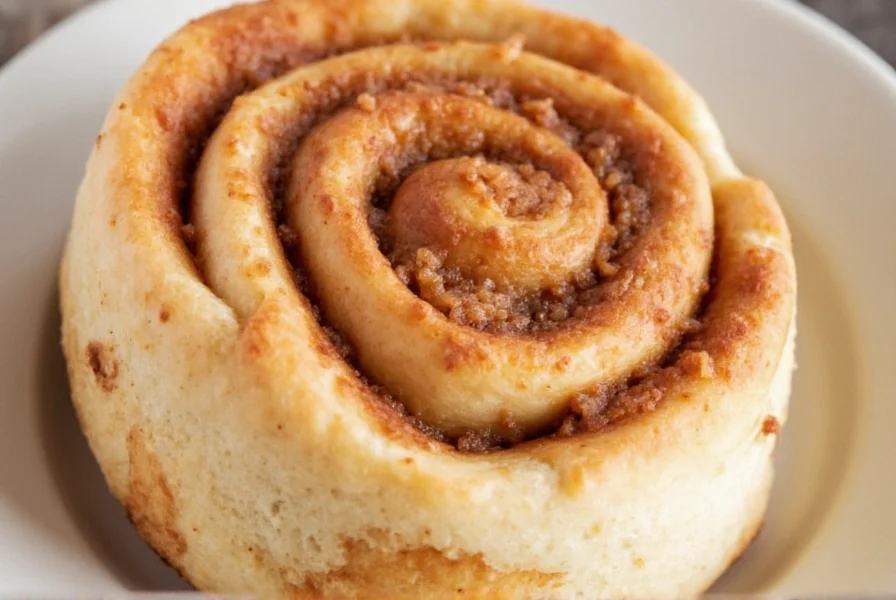Creating bakery-quality cinnamon buns starts with understanding the science behind the perfect filling. While many home bakers struggle with fillings that either leak out during baking or fail to deliver enough flavor, mastering this component transforms ordinary pastries into extraordinary treats. The key lies in ingredient quality, proper ratios, and application technique.
Essential Cinnamon Bun Filling Ingredients Explained
Not all cinnamon bun fillings are created equal. The difference between mediocre and magnificent comes down to understanding each component's role:
- Butter (1/2 cup, softened) - Acts as the binding agent that holds sugar and cinnamon together. European-style butter with higher fat content (82-86%) creates a richer filling that doesn't separate during baking. Never use melted butter, as this causes leakage.
- Brown sugar (1 cup, packed) - Provides moisture and caramel notes. Dark brown sugar offers deeper molasses flavor, while light brown creates a milder sweetness. For traditional Swedish cinnamon bun filling recipe enthusiasts, some Scandinavian bakers use a mix of white and brown sugar.
- Ground cinnamon (3 tablespoons) - The star ingredient. Ceylon cinnamon offers delicate floral notes, while Cassia provides that familiar spicy punch. For the best cinnamon to sugar ratio for cinnamon buns, maintain the 1:2 proportion.
- Salt (pinch) - Balances sweetness and enhances other flavors.
- Optional additions - 1/4 cup chopped pecans or walnuts, 1 teaspoon vanilla extract, or 2 tablespoons heavy cream for extra richness

Step-by-Step Filling Preparation Guide
Follow these professional techniques to achieve consistent results every time:
- Prepare your butter - Soften to room temperature (about 65°F/18°C). It should yield slightly when pressed but not be oily. This temperature ensures proper spreading without tearing dough.
- Mix dry ingredients - In a separate bowl, whisk together brown sugar, cinnamon, and salt. Breaking up any sugar clumps prevents uneven distribution.
- Combine ingredients - Spread softened butter evenly across rolled dough, leaving 1/2 inch border. Sprinkle sugar mixture uniformly - this prevents cinnamon bun filling too runny issues caused by uneven distribution.
- Roll properly - Start from the long edge, rolling tightly but gently. Use the palms of your hands to smooth as you roll to maintain even thickness.
Avoiding Common Cinnamon Filling Mistakes
Even experienced bakers encounter these issues. Here's how to prevent them:
| Common Problem | Why It Happens | Professional Solution |
|---|---|---|
| Filling leaks out during baking | Too much butter, melted butter, or uneven dough thickness | Use softened (not melted) butter and maintain consistent 1/4-inch dough thickness |
| Bland cinnamon flavor | Old cinnamon, insufficient quantity, or poor quality | Use fresh cinnamon (replace every 6 months), measure by volume not weight |
| Fillings sinks to bottom | Dough rolled too tightly or insufficient resting time | Roll gently and allow proper proofing time before baking |
Variations for Different Dietary Needs
Adapt the classic cinnamon roll filling without brown sugar or other modifications while maintaining quality:
- Vegan option - Substitute butter with coconut oil or vegan butter. For best results, chill the filling mixture slightly before application to prevent leakage.
- Gluten-free - Works with most gluten-free dough recipes. Add 1 tablespoon tapioca starch to the filling to improve texture.
- Reduced sugar - Replace half the brown sugar with coconut sugar and add 1/4 teaspoon xanthan gum to maintain binding properties.
- Spiced variation - Add 1/2 teaspoon each of nutmeg, cardamom, and allspice for a more complex flavor profile popular in Scandinavian baking.

Pro Tips from Professional Bakers
Master bakers employ these techniques to elevate their cinnamon bun filling measurements and application:
- Temperature control - Keep filling ingredients at the same temperature as your dough (around 75°F/24°C) to prevent shocking the yeast
- Layering technique - For extra flavor dimension, create thin layers: butter, then cinnamon-sugar, then a light sprinkle of finely chopped nuts
- Preventing leakage - After rolling, pinch the seam tightly and place seam-side down before cutting. This creates a natural barrier against filling escape
- Flavor enhancement - Let the filling rest on the dough for 5 minutes before rolling. This allows flavors to meld and creates better adhesion
Troubleshooting Guide
When things go wrong with your cinnamon bun filling, these solutions will save your batch:
- Runny filling - If your filling seems too wet before baking, refrigerate the rolled dough for 15-20 minutes to firm up the butter
- Weak cinnamon flavor - Brush finished buns with cinnamon-infused simple syrup (1 cup sugar, 1 cup water, 2 tablespoons cinnamon, simmered 5 minutes)
- Fillings clumping - Sift your sugar mixture through a fine mesh sieve before application for even distribution
- Dry buns - If your cinnamon roll filling alternatives lack moisture, add 1-2 tablespoons of heavy cream to the sugar mixture
Frequently Asked Questions
What's the ideal cinnamon to sugar ratio for cinnamon buns?
The professional standard is 1 part cinnamon to 2 parts sugar by volume. For most recipes, this translates to 3 tablespoons cinnamon per 1 cup packed brown sugar. This ratio delivers robust flavor without bitterness. Adjust slightly based on cinnamon type—Ceylon cinnamon can handle slightly higher proportions than Cassia.
How do I prevent cinnamon filling from leaking during baking?
Prevent leakage by using softened (not melted) butter, maintaining consistent dough thickness (about 1/4 inch), and pinching the seam tightly after rolling. Refrigerating the shaped buns for 15 minutes before baking firms the butter. For traditional Swedish cinnamon bun filling, some bakers add 1 tablespoon of flour to the sugar mixture as a thickener.
Can I make cinnamon bun filling without brown sugar?
Yes, you can substitute white sugar with 1-2 tablespoons of molasses added to the butter for similar moisture and flavor. For a refined alternative, use coconut sugar which provides natural caramel notes. When making cinnamon roll filling without brown sugar, increase the butter by 1-2 tablespoons to compensate for lost moisture.
How thick should cinnamon bun filling be applied?
The ideal filling layer is approximately 1/8 inch thick across the entire dough surface. Too thin and the buns lack flavor; too thick and it causes leakage or prevents proper rising. Professional bakers recommend measuring 1/2 cup filling per standard 9x13-inch dough rectangle for consistent results.
Why does my cinnamon filling sink to the bottom of the buns?
Filling sinks when dough is rolled too tightly, compressing the yeast layers, or when insufficient proofing time follows shaping. Allow shaped buns to rest 20-30 minutes before baking to let yeast expand and create air pockets that hold the filling in place. Using softened (not melted) butter also prevents sinking by maintaining proper viscosity.











 浙公网安备
33010002000092号
浙公网安备
33010002000092号 浙B2-20120091-4
浙B2-20120091-4